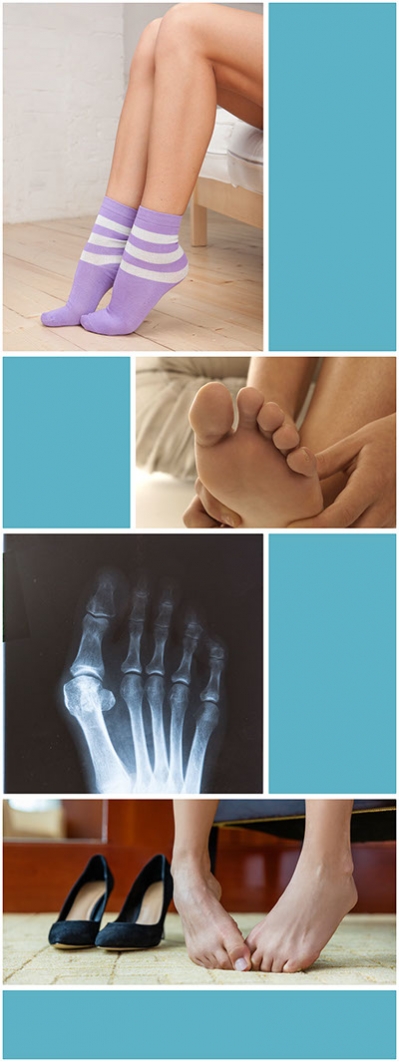Symptoms & Physical Impact
One of the symptoms is, of course, a visibly recognizable unusual foot shape. The bump on the inner side of the foot makes it appear more wider and crooked. The soft tissue in said area is usually reddened and thickened by increased callus formation. These optical changes often occur even beforehand any noticeable pain. So please don’t hesitate to get medical advice if you notice any lumps or calluses. Sometimes the deformations are even connected to psychological suffering, the affected person tends to hide their feet and renounces open and classy shoes.
Concerning the anatomical displacement of the metatarsal bone, a common symptom is an uneven distribution of physical strain on the tendons while walking or standing for a while. Thus the patient is not able to properly roll the affected foot because the process causes them immense pain. The body’s reaction is an adjusted gait pattern, which results in more pain and inflammations in adjoining joints and may even affect the knees and hips.
Bunions involve an unnatural angle between the big toe and the metatarsal bone, which can lead to a pre-form of arthrosis if left untreated. Arthrosis means that cartilages between the bones wear down too quickly, accompanied by pain and swellings because of excessive pressure.
Footwear of high quality and medical insoles may support rolling off the foot and thus postpone possible symptoms, but they cannot cure the deformity. By applying pressure on tendons and synovial bursa, irritations and inflammations on the inside and outside of the front foot are being fostered. Especially the big toe is highly sensitive to touch and pressure. Sometimes these symptoms spread to adjacent toes, causing a so called Claw Toe.
You can get further information concerning the accompanying symptoms on our website.


